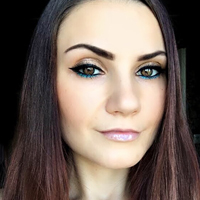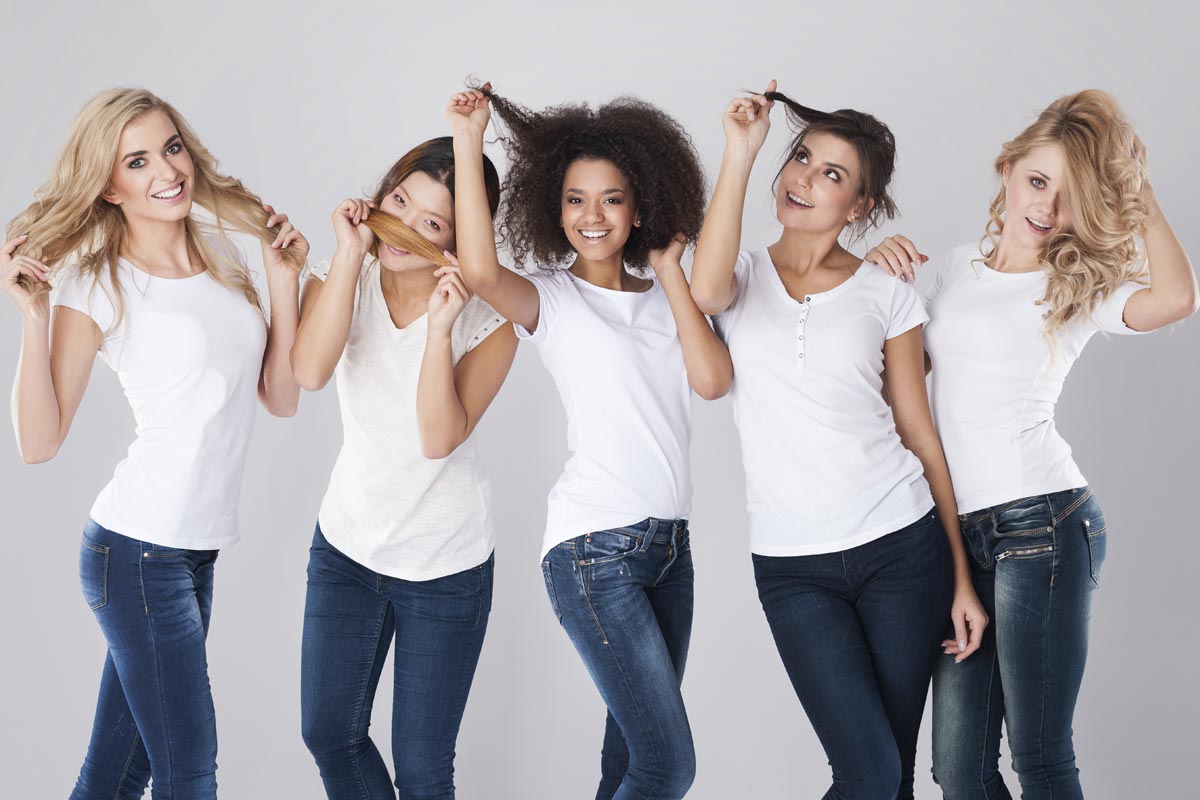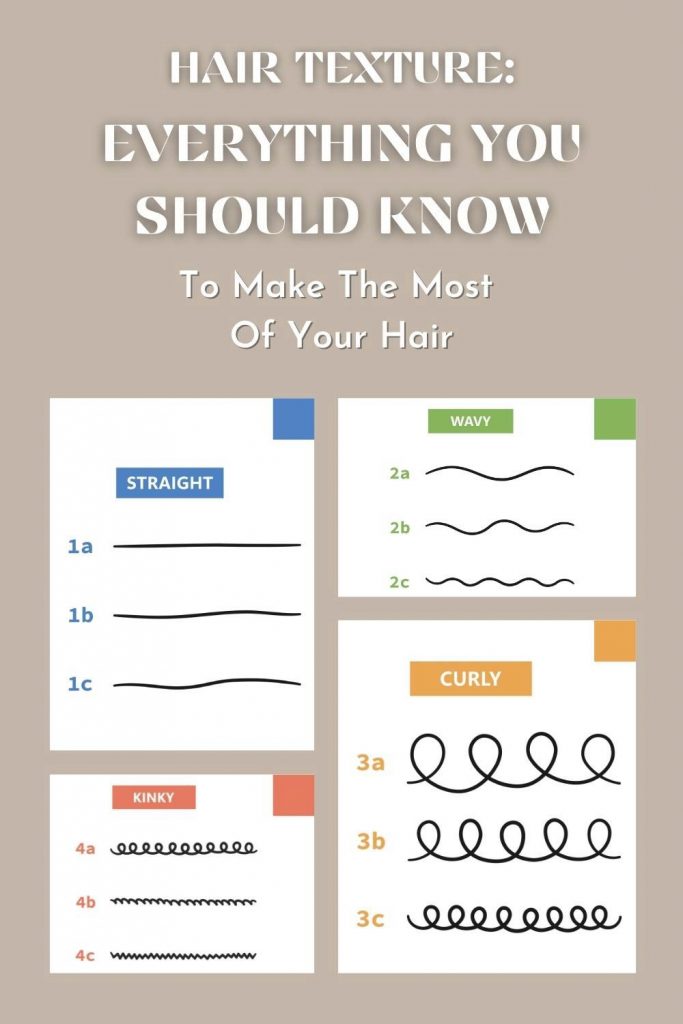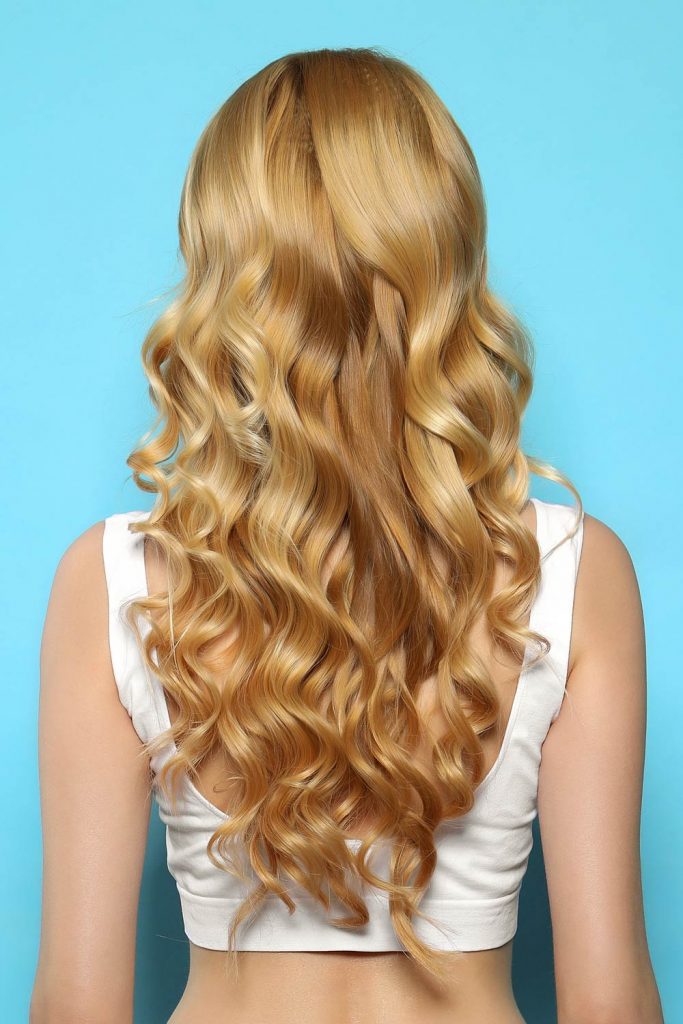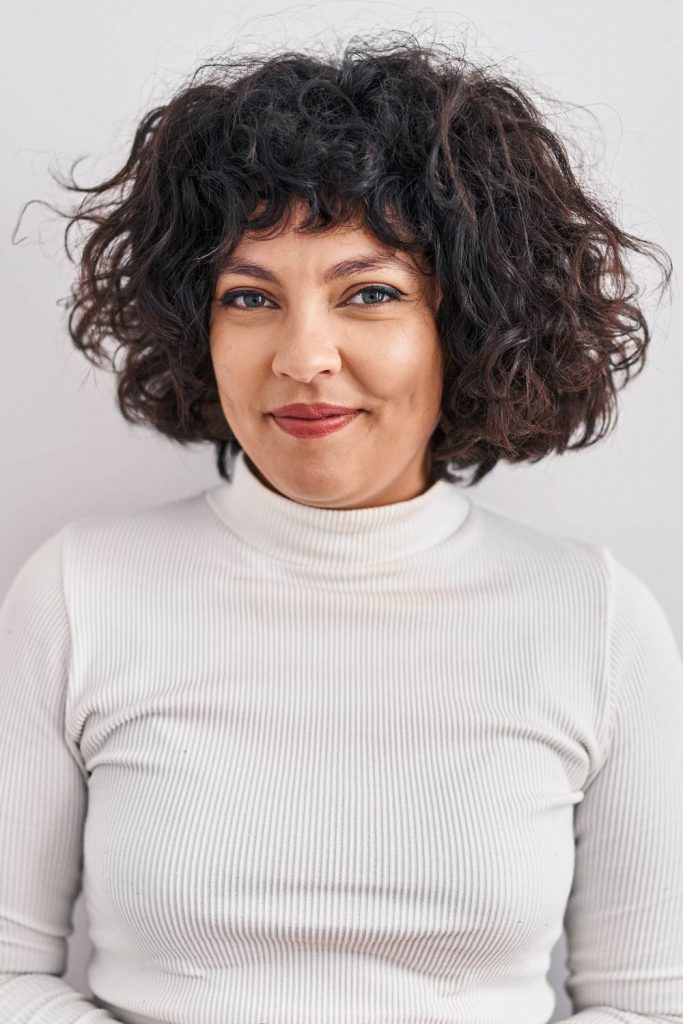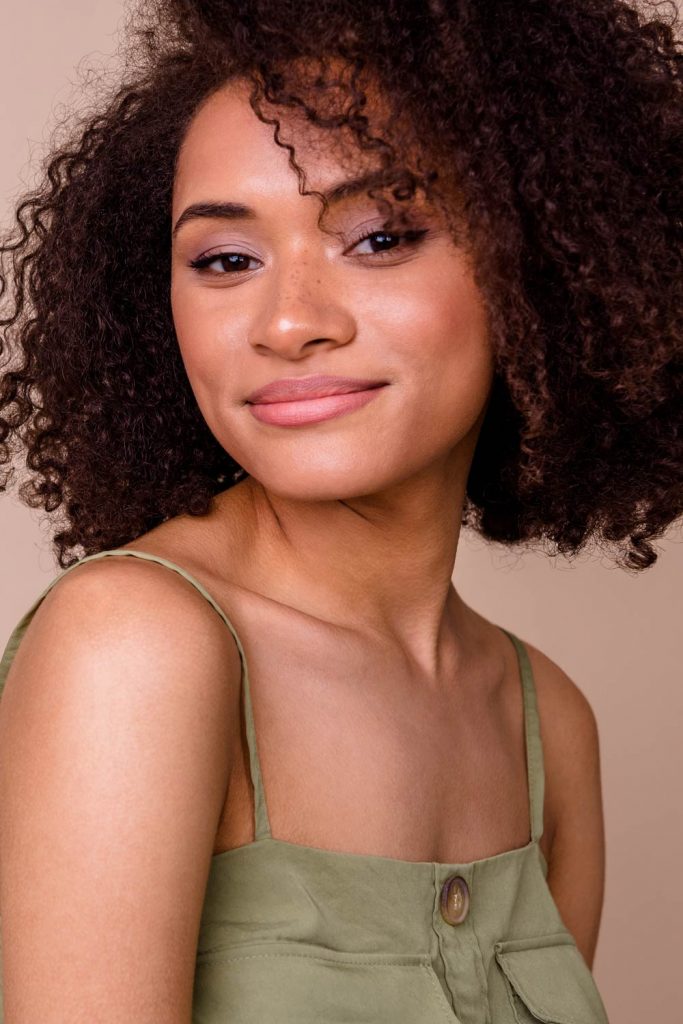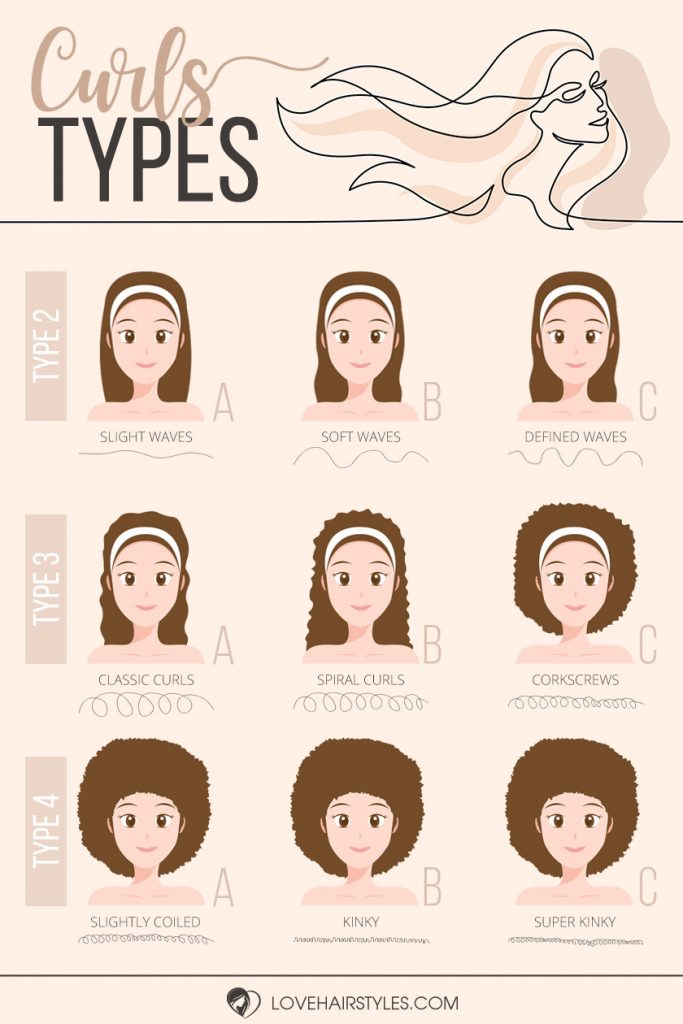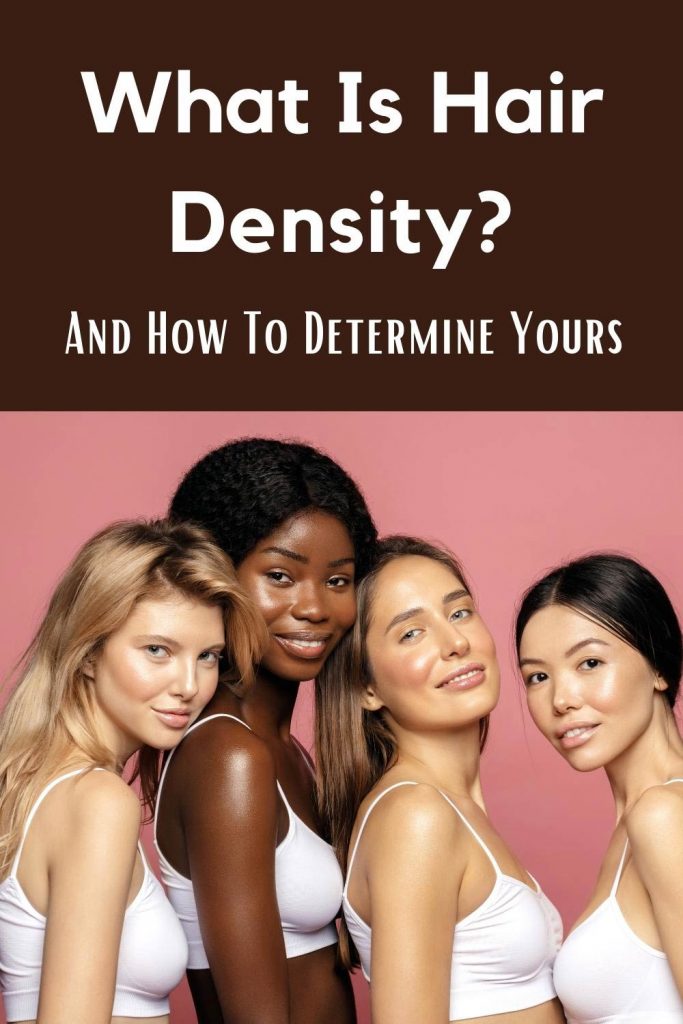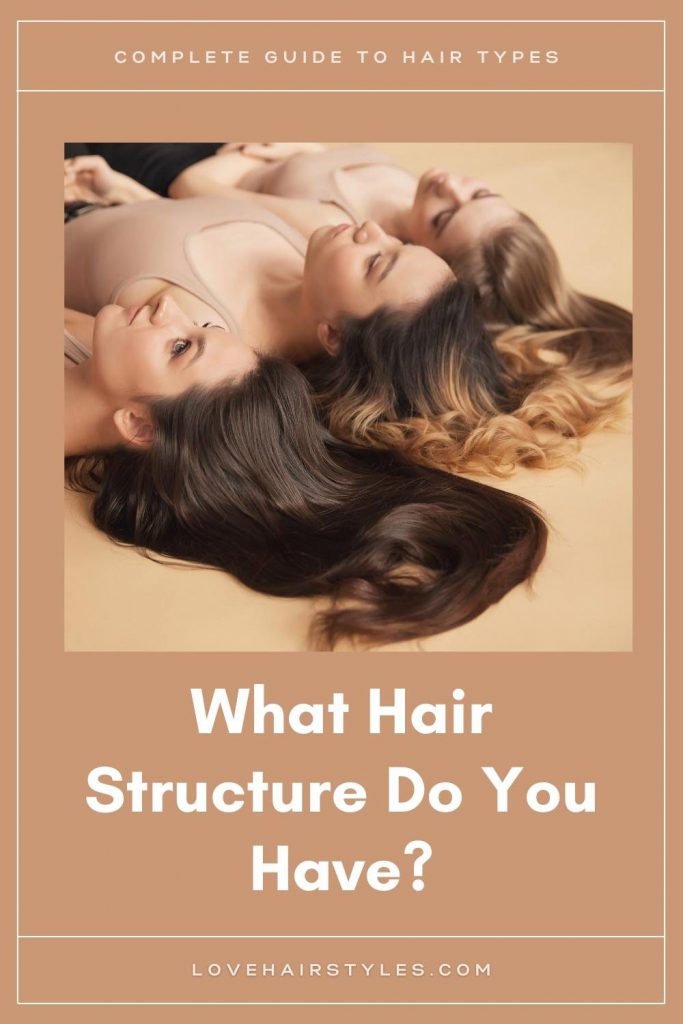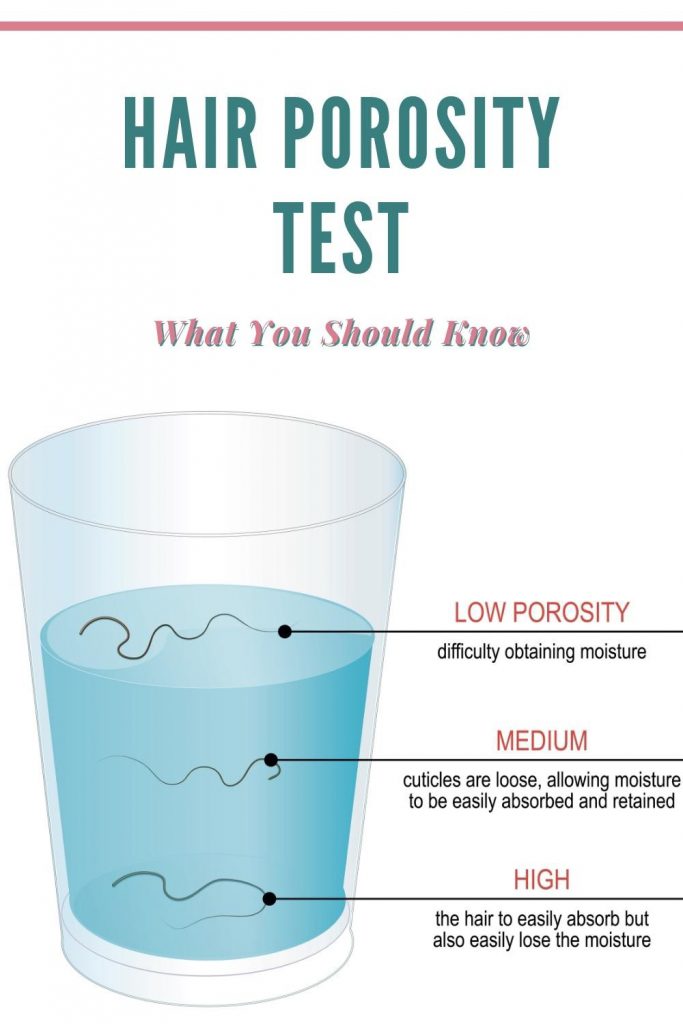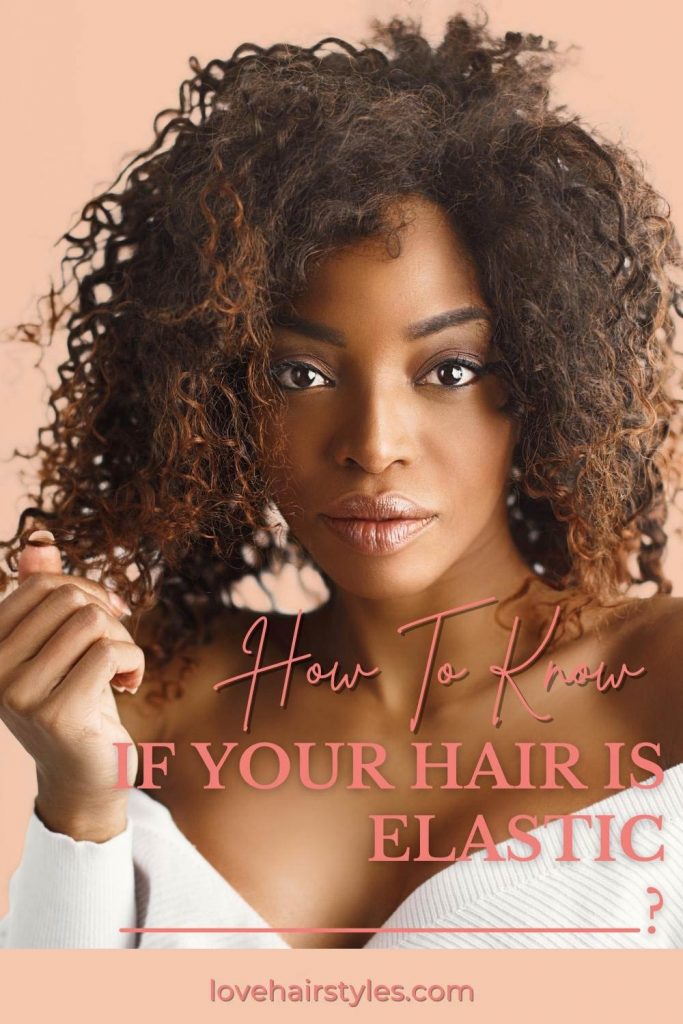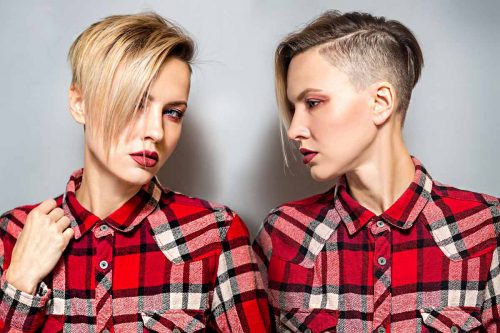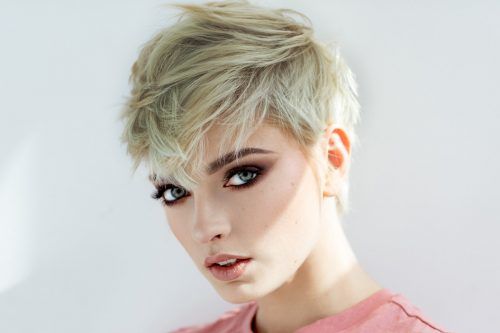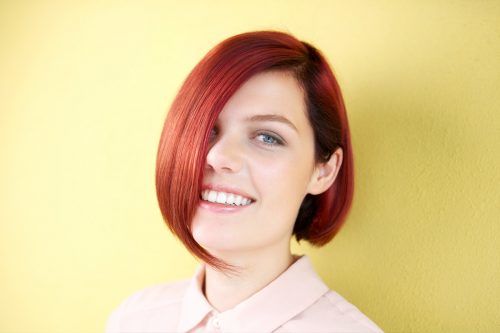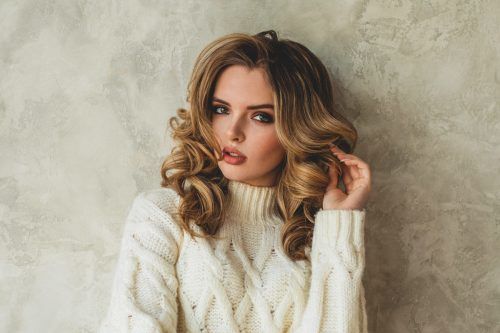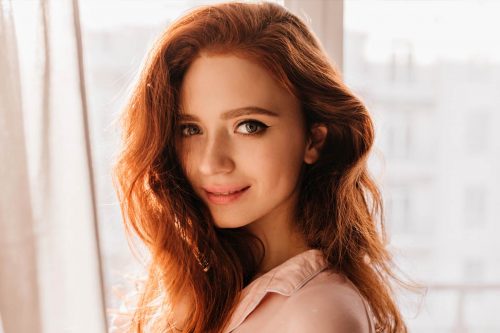There is a good reason why you should know all the hair types existing. As they are extremely different, it makes sense to be well aware of them. This helps you to know better what hair products you should use to maintain each one and be on point. Knowing your texture is the most important step toward a healthy look and feel, and today you've got close to it thanks to our informative guide.
Hair Texture (AKA Curl Pattern)
Credit photo: shutterstockEveryone's hair has its own texture, which can be also referred to as a curl pattern. There are four commonly accepted types of hair, namely straight, wavy, curly and coily or kinky. Every hair type is then divided into four subcategories – a, b, c and d. The hair shape is affected by the follicle shape, which is a genetic feature. To help you find out what hair pattern you have, we have broken down the types of hair texture below.
Straight Hair
Credit photo: shutterstockIt makes sense to start from the beginning of the hair type chart, which is straight hair or type 1 hair. You know your hair is straight if none of the curling methods work for it. The hair remains flat from top to bottom. On the bright side though, the strands are silky smooth, soft and have an extremely shiny finish. If your locks are straight, it usually means you have fine hair. Your scalp can also produce quite a lot of sebum, so you should not be surprised if you often have greasy hair, as it is typical for the straight type of hair.
-
Straight 1A Hair: This type of hair is ultimately straight. It does not show any signs of curling and if you try to curl it, it becomes flat pretty fast. Your hair may lack volume but it is very soft to the touch.
-
Straight 1B Hair: There is no noticeable curling in your hair. Yet, you can detect random bends here and there. Your hair is quite voluminous compared to the previous subcategory.
-
Straight 1C Hair: Your hair does not have curls. Though, it is quite voluminous. What makes it different from the two other types is that it is coarse hair, not fine or soft.
Wavy Hair
Credit photo: shutterstockNext up is the most relaxed category of hair curl types – the type 2, or simply wavy hair. Since it can be different, it involves three main sub-classifications that are based on the width of your curly pattern – 2a hair, 2b hair and 2c hair. See how special each one can be!
-
Wavy 2A Hair: The 2a hair type is the well-balanced combo of straight and light curls. It's usually characterized by soft, natural waves that provide a lot of natural movement, curling primarily at the ends. Also, it's the most flexible hair texture types, as it can easily adapt to any styling idea.
-
Wavy 2B Hair: The second type of wavy hair is far more defined and thick hair. This time, getting a perfectly straight chevelure will be a tough deal. That's because your steady, S-shaped strands that get thicker at the midway are quite hard to tame.
-
Wavy 2C Hair: The texture and thickness of the 2c hair type can be seen from a mile away. These waves are super coarse, which means they’re the closest to the frizzy troubles. They start twisting from the very roots, forming a perfectly defined S shape.
Curled Hair
Credit photo: shutterstockThe third type of curled hair is best characterized by its full body, climate dependence and big, well-defined S-shape. It also may come in an inverted S-shape. These curls can be anything from loose loops to tough corkscrews, and their common feature is that they’re all prone to damage. There are three sub types of curly hair – 3a, 3b, and 3c hair.
-
Curly 3A Hair: Ladies with the 3a hair type flaunt shiny, loose curls that are very thick but airy enough to move in a relaxed pattern. As for their size, it's something like sidewalk chalk in width that can turn into a frizzy artwork once you tousle or brush it up.
-
Curly 3B Hair: The 2b curls are all about bounce and spring. The best thing about this curls type is that it never lacks volume in the hair. Their bonds are so tight that they always slay with a round and full silhouette. With this hair type, the real hair length is hidden under the twist of curls. If you try to straighten your locks, which actually will be a real disaster, you’ll get surprised by the length.
-
Curly 3C Hair: Thin, bouncy and unbelievably volumetric: that's all we can say about the 3c hair type. Though its circumference is more like a pencil, ladies who flaunt this type know everything about volume loyalty.
Coily / Kinky Hair
Credit photo: shutterstockThough some people think that kinky hair density makes it invulnerable to damage, type 4 hair is very fragile and delicate. If you have a closer look at its pattern, you will see that the tightly coiled locks move in a zigzag manner. Keep in mind that this is the driest hair type that is super prone to breakage, which is why damaged hair may be one of your main concerns. Yet, the looks of such manes are the ones to remember. The fourth group of curly hair types includes three subcategories as well – 4a, 4b and 4c hair.
-
Kinky 4A Hair: The circumference of the 4a hair type can fit a crochet needle. And the thinner the twists are, the more tangles you need to fight with, and that’s probably one of the main pitfalls of this texture. Of course, when it comes to styling, all types of kinky hair need to go through seven circles of softening and moisturizing preparation, and this one isn’t an exception.
-
Kinky 4B Hair: The density of 4b hair usually creates a Z-like curl pattern. The strands are packed tightly with one another, forming a puffy chevelure with little curly edges that stick out at the ends. When this type is cut short, it gives more room for styling creativity than the previous ones, as its texture is a bit softer and thus more manageable.
-
Kinky 4C Hair: The 4c hair type is very similar to the 4b curls, and the slight difference lies in the extra sensitivity of the latter. It also has a zigzag pattern, yet, it's hard to notice it with a naked eye due to its shrinkage. That's why it gives silhouettes that look like dandelions.
More Than One Curl Texture?
Some ladies can be blessed with several different hair types from the curl pattern chart, and that’s pretty common. It’s OK to have 4b at the edges while having a 4a type all over the length. Or, for example, some strands of a 4a chevelure can be 3c. The point is that there’s no pattern for individuality!
Is It True That Your Hair Changes Every 7 Years?
Hair does go through a natural growth cycle that includes phases of growing, resting, and shedding. This cycle means that over time, you're likely to see changes in your hair, but not in a synchronized manner where all hair changes at once every seven years.
Each hair strand has its own life cycle, which lasts between two to six years on average, and not all hair strands are in the same phase at the same time. This individual cycle ensures a constant hair density and prevents noticeable hair thinning in one area. After a hair falls out, the follicle goes dormant for about a year before starting to grow a new strand. Over time, especially as you age, these cycles can lead to noticeable changes in hair texture and thickness. Factors like hormonal changes, nutritional deficiencies, stress, and damage to hair follicles can influence these changes as well.
So while it's not accurate to say that you get a completely new head of hair every 7 years, your hair does undergo continual renewal and change due to the individual cycles of hair growth and shedding. The appearance and texture of your hair can evolve over time due to a combination of these cycles and other factors affecting hair health.
What Is Hair Density And How To Determine Yours
Credit photo: shutterstockThere is also such a hair characteristic like density. It refers to the number of hair your head accommodates. You should not confuse it with hair thickness though, which describes the diameter of the hair shaft, not the amount of hair you have. Thick hair is not necessarily dense and vice versa. Hair density has three levels. To figure out yours, you just need to examine your scalp in the mirror.
-
Thin. Having a thin density of hair means that your scalp is visible through it. This is caused by the scattered placement of the hair across your head.
-
Medium. With a medium density of hair, your scalp is partly visible.
-
Thick. When you have a thick density, the scalp underneath it is barely noticeable.
What Structure Can Hair Have
Credit photo: shutterstockWhen you are talking about hair structure, you imply the strand thickness. As such, you can have:
-
Fine hair structure. Fine hair is essentially thin hair. As it is pretty soft, it holds the shape well when curled or styled. When a single hair is compared to a sewing thread, the former should look thinner than the latter.
-
Medium hair structure. If your hair and the sewing thread are more or less the same thickness, you have a medium hair structure. The same suggests the ability of your locks to hold hairstyles decently.
-
Coarse hair structure. You have coarse hair if it fails to keep a hairstyle or if it is thicker than the sewing thread, which is why it is also considered thick hair.
Coarse hair, like any hair type, has its unique characteristics and beauty. It can be straight, wavy, curly, or kinky. While it might require specific care to maintain moisture and manageability due to its tendency to be dry and prone to frizz, with the right care routine, coarse hair can look healthy and shiny.
The key to caring for coarse hair includes regular hydration, using the right hair care products, and minimizing heat and chemical treatments that can damage the hair. It's also beneficial to incorporate deep conditioning treatments and use oils or leave-in conditioners to lock in moisture.
What You Should Know About Hair Porosity
Credit photo: shutterstockHair porosity is the term used to describe the ability of your hair to soak moisture in. This applies not only to water but products as well. As a rule of thumb, the amount of soaked in moisture is equivalent to the level of hair porosity. It falls into three categories:
-
High: If your hair is porous, it means that its cuticle has a great many pores. You can check this by immersing a single hair in the water. Porous hair will sink. As it is so eager to absorb moisture, it can also accumulate chemical residue. As a result, your hair gets damaged, rough and frizzy and you find it very difficult to saturate, which can be one of the reasons why hair is falling out. It may also affect how often should you cut your hair, which can be a serious obstacle if you want to grow long hair.
-
Medium: When immersed in the water, medium porous hair does not sink. Though, it does not float on the water surface as well. It is somewhere in the middle. This type of hair absorbs the required moisture volume without overdoing it. It does not get damaged easily and you do not have to make much effort maintaining or styling it.
-
Low: Hair with low porosity does not take in much moisture easily, so it remains afloat when placed in the water. This is caused by a smaller number of cuticles in hair, which is why it is not as good at absorbing water as other types. It also does not dry fast and has a sticky feel to it.
How To Know If Your Hair Is Elastic
Credit photo: shutterstockThere is another hair characteristic of healthy hair, which is elasticity. If your hair gets back to its initial shape after stretching, it means it is elastic. It is also bouncy, shiny and strong. To determine what amount of elasticity your locks have, you need to stretch a strand of your hair while it is still wet to the ultimate length. Then compare the result to the following hair types chart:
-
High: Hair with high elasticity allows you to stretch it as much as up to 50% before breaking when it is wet. This is an indicator of strong hair.
-
Medium: Medium elastic hair can be stretched pretty decently without breaking. This hair type is the most common. To make your locks stronger and more elastic, you can apply oils and masks.
-
Low: If your hair breaks as soon as you stretch it, then it has low elasticity.
Hair Grease And Scalp Moisture
Your hair greasiness is an important quality to know about since it indicates how often should you wash your hair. It also helps you to understand what hair care products you need, such as clarifying shampoo and conditioner as well as the frequency of scalp exfoliating and other treatments. To find out your hair greasiness, you need to wash and air dry it before going to sleep. In the morning, take a paper towel or a piece of blotting paper and press it against the skin on the head. Then inspect how much oil your scalp has produced overnight and compare it to the following:
-
Oily: When you have greasy hair, the tissue will have quite a noticeable oily spot on it. Such hair requires washing anywhere from four to five times weekly.
-
Normal: In case the oily spot is not particularly noticeable, then your hair is normal. It does not need frequent washing. Once or twice per week is enough.
-
Dry: Dry scalp does not produce oil at all, so the towel is going to be clean after the patch test. Your hair needs to be hydrated frequently.
-
Combination: In some cases, your scalp can generate oil in random places, which means that you have a combo hair type.
FAQ: Hair Types
How do I identify my hair type?
To figure out what type of hair you have, you may use the hair texture chart. Straight hair refers to the strand with a flat pattern. Wavy hair has a slight curve, yet it does not form a curl yet. Curly hair features strands with an S shape, while coily hair has a Z shaped pattern.
Which hair type shrinks the most?
The type 4 hair is the most shrinkable. As the coils are tight, they can bounce back after being stretched. It may shrink about 3/4 of its length.
What is the strongest hair type?
Coarse, or thick, hair is considered the strongest. You can determine this hair type by simply touching your locks. They should feel thick or coarse.
What hair type is most common?
Normal or medium hair makes up the biggest group, as it is the most common. It is smooth, soft and shiny. It is also pretty good at holding hairstyles.
Now that you know everything you need about hair types, you have no excuse for your mane not to look its best. It may only seem that there is too much information to keep in mind. Practice and consistency guarantee that you will be able to achieve the best result in no time. And once you need more knowledge, make sure to get back to our guide.
REFERENCES:Was this article helpful?


